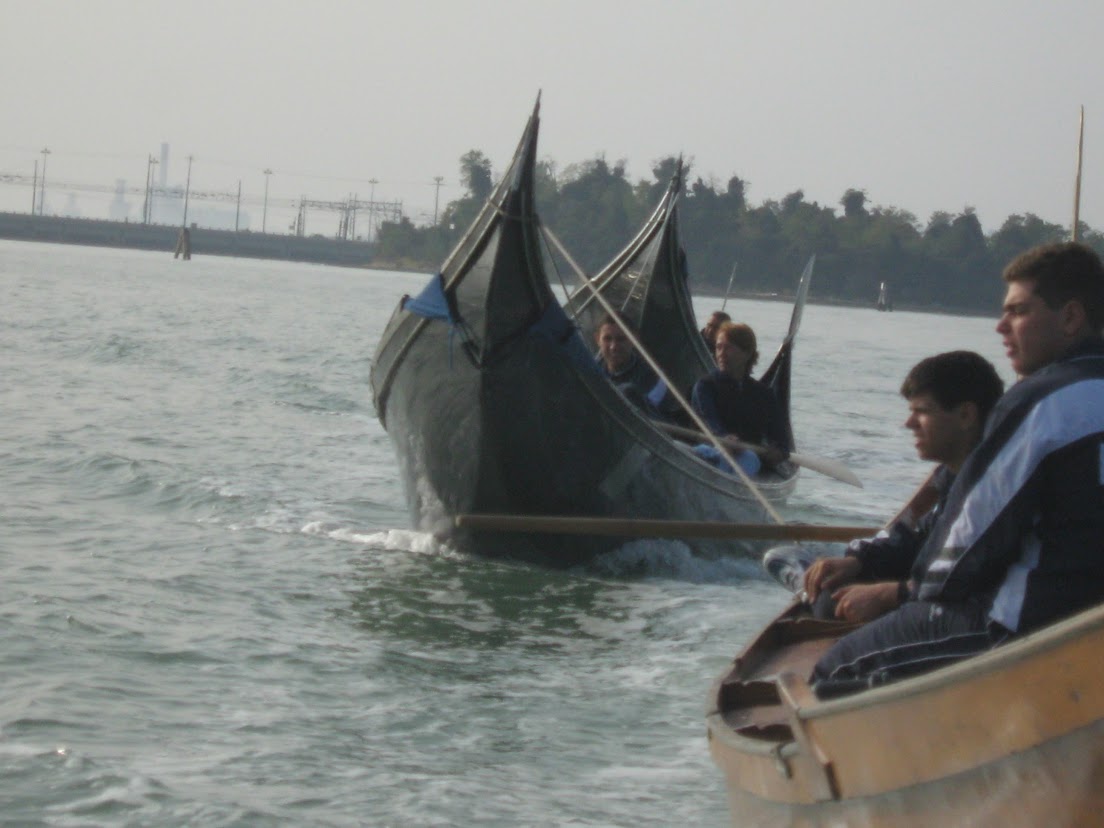Newspaper headlines have to do two things: Be short, and make you want to buy the paper. You’ve got to have emotions about whatever it is, and Lord knows there’s no lack of emotions around here.
Be careful, though, not to draw the wrong conclusions or make wild assumptions when you have more feelings than information.
Case in point: This simple but fraught headline on today’s announcement board at the newsstand.
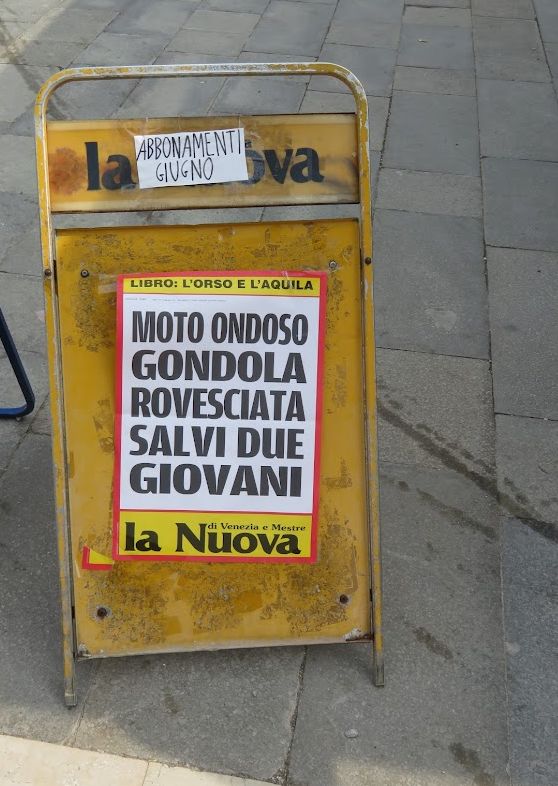
The very brief story in La Nuova Venezia basically said that two 18-year-old boys were towing a gondola between the Bacini and San Pietro di Castello on a wide canal known as the Canale delle Navi, known also as a stretch of water becoming increasingly wild with the wakes of every motorized vehicle known to Venice. They were bringing the boat to the squero for repairs.
Some water entered the gondola, courtesy of a wave, and more followed. The boat became yet more unstable, and before long the combination of internal and external liquid pushed the boat overboard, so to speak. The article says that the boys fell in the water, but didn’t explain how. Waves and some variety of panic could have done the trick.
A passing boat rendered immediate aid, the firemen were called, as were the local police. The story will undoubtedly develop with claims and counterclaims (there seems to be some talk of a big tourist launch that was speeding). Allow me to shake my two raised fists and bellow “Curse you, moto ondoso!”
But I thought I’d reflect for a moment on the fact that towing a boat here isn’t as simple as you might think. I have participated in numerous transfers of rowing boats under tow, and you quickly discover that, even without waves, you need to pay attention. It’s not unusual to see motorboats towing some Venetian boat from the area of the race eliminations at very high speed, and some of those boats flip over too.
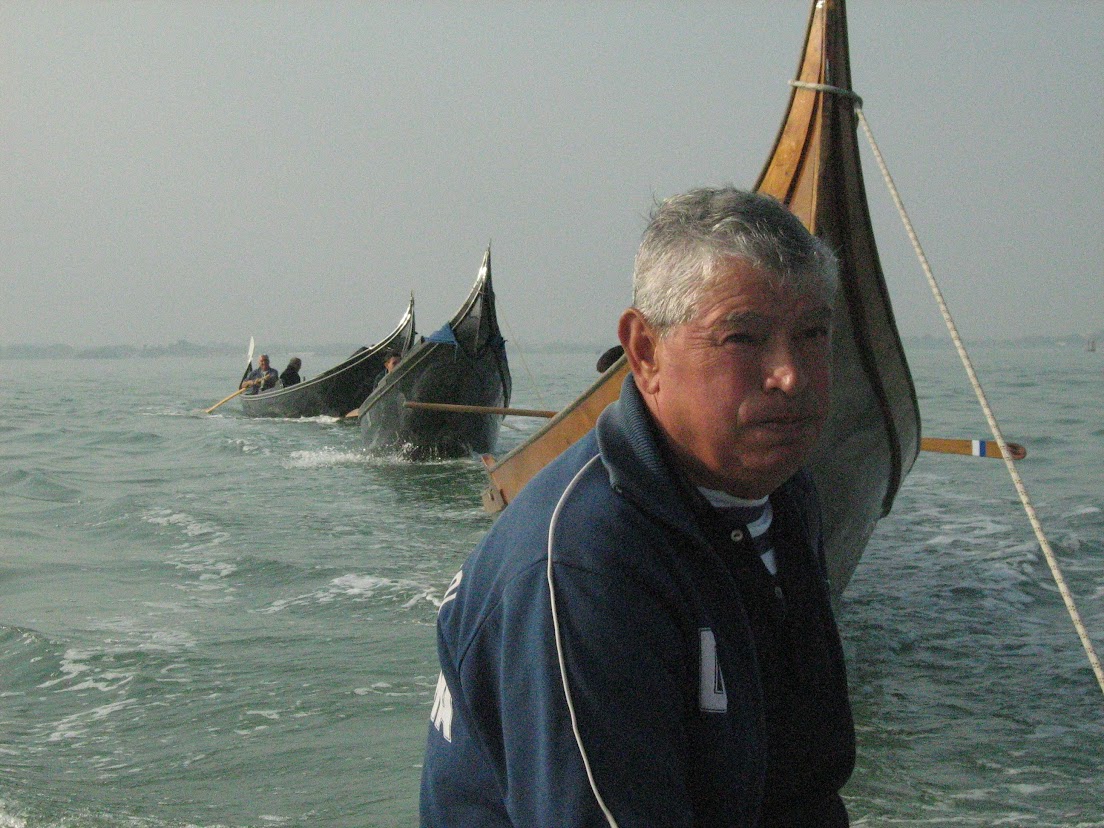
We know nothing about how this operation was being carried out. Was the gondola tied by the bow or the stern? How fast were they going? How long was the rope linking the two boats? Was there wind? In the early afternoon they would have been going against the tide; was that a factor? Don’t think I’m trying to defend the waves, I am just saying that this is a tricky undertaking for anyone who may not yet know some of the fine points. If one of the boys had been sitting in the gondola, using the oar as a sort of rudder to keep the boat from slewing around, that would have been a huge help. Or you can usefully tie a length of chain, or some deadweight object, to the stern to act as a sort of sea anchor keeping the boat from skidding around. The boat wants to fishtail because it is already riding on the swervy crest of two waves that are the wake created by the motorboat itself.
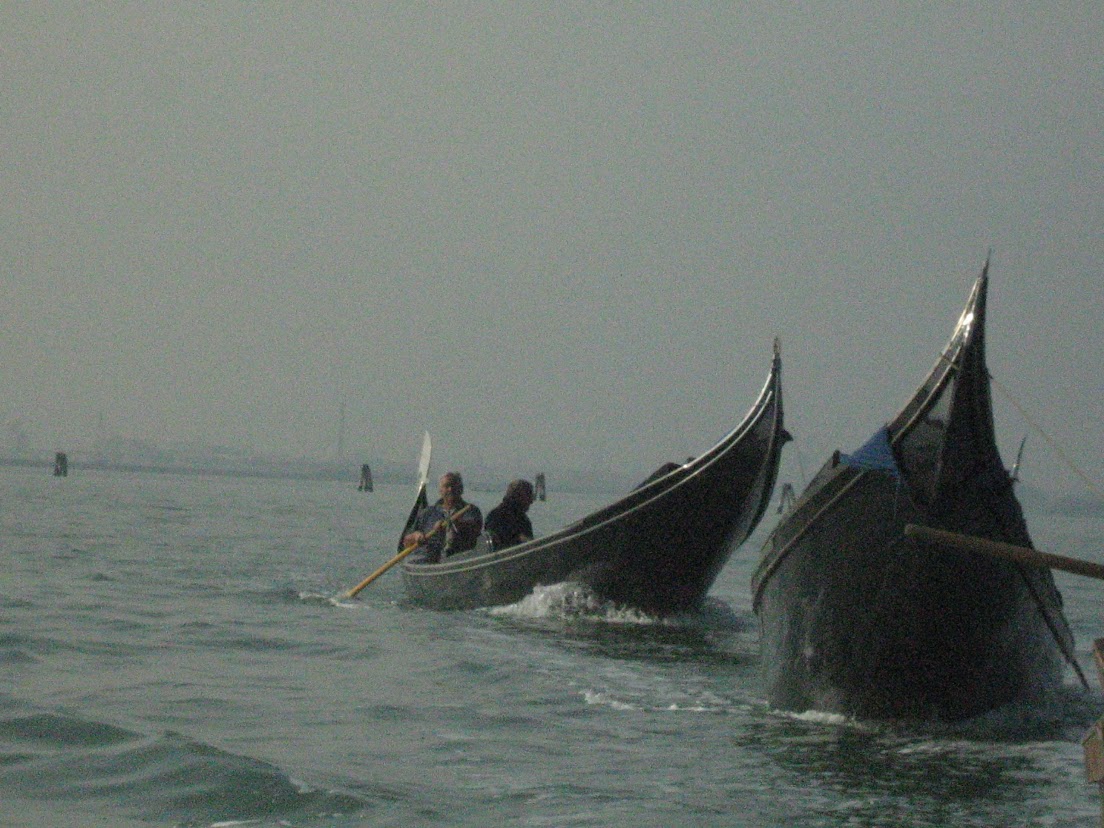
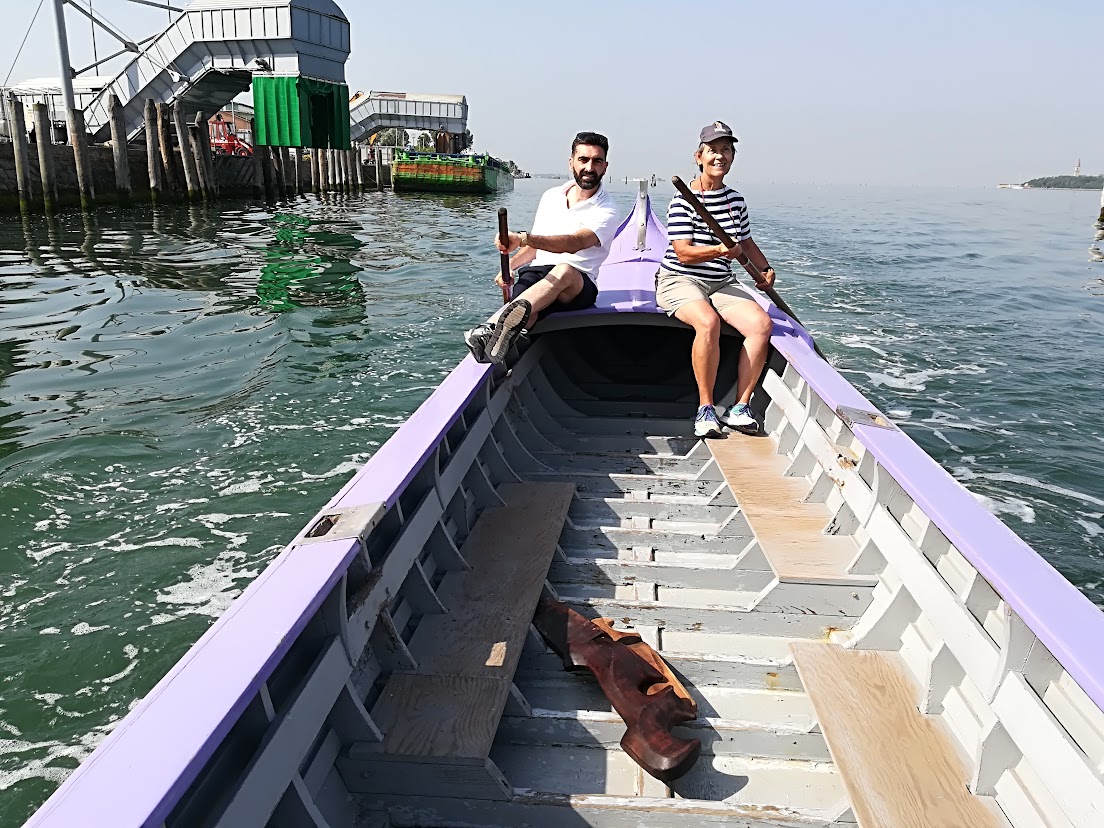
Of course we don’t want waves, and we don’t want boys falling in the water all of a sudden. I’m certainly ready to blame moto ondoso for every bad thing on earth. But towing a boat is like driving in the snow. Things can happen.
